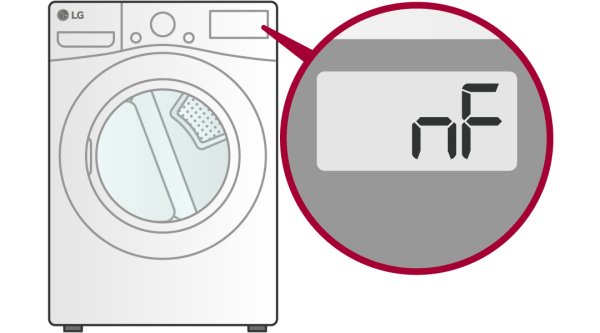
Here’s the deal: the E3 error code is essentially your dryer’s way of telling you that it’s having trouble with the motor, kind of like the way your computer might freeze if there’s too much going on at once. This error can appear due to a few reasons, and while it might seem daunting, most of the time, it’s a humble call for help rather than a catastrophic failure. So, take a deep breath and let’s dive into what this error code means and how you can address it.
Understanding the LG Dryer E3 Error Code
When the E3 error code pops up on your LG dryer, it’s signaling a motor-related issue. Specifically, this error arises when the drum, which is the part that tumbles your clothes around, doesn’t rotate as expected. Think of it as when you’re trying to roll a heavy ball, but it doesn’t move because it’s stuck on something. In dryer terms, it means the motor might be struggling to do its job effectively. This could be due to an overload, a snag, or even an issue with the motor itself.
Loads that are too large can often lead to the E3 error. Imagine trying to carry a mountain of laundry yourself; it just doesn’t work! When the dryer is stuffed to the brim, it can’t rotate the drum smoothly, leading to motor strain. Consequently, the motor will send out the E3 signal, kind of like waving a red flag, indicating it’s overwhelmed and needs your intervention.
While an overloaded drum is the most common cause, sometimes the issue could be more technical, like a faulty motor or drum roller. This is akin to a car that won’t start not because of the driver but maybe because the battery is flat. Investigating these components might seem daunting, but understanding them can help you decide whether it’s a DIY fix or time to call in a professional.
Troubleshooting the E3 Error Code
So, you’ve got an E3 code — what next? Well, before you panic, start simple! Begin by checking the load inside the dryer. If it seems too packed, lighten the load to ensure the drum can tumble freely. This is often the most straightforward solution, similar to removing some books from an overloaded backpack to avoid straining your back. Once you’ve adjusted the load, try running the dryer again and check if the error persists.
If adjusting the load doesn’t do the trick, it might be time to dig a bit deeper. Unplug the dryer and take a look at the drum. Inspect it for any obvious obstructions, like loose clothing lodged around the drum area that might be preventing rotation. You’d be surprised how often a single sock can cause such chaos! If everything looks clear and the error still appears, it could be a sign of a more serious mechanical problem, such as a malfunctioning motor or drum roller.
When the deeper issues surface, and after you’ve tried the simpler fixes without success, it may be wise to call a professional technician. They have the expertise needed to safely diagnose and fix these more complex issues. It’s like calling a mechanic who has the right tools to fix your car instead of trying to fix the engine yourself.
Preventing Future E3 Errors
Prevention is always better than cure, wouldn’t you agree? To avoid facing down the E3 error code regularly, practicing good laundry habits is essential. Avoid overloading your dryer; this is key. Keep the loads manageable and balanced, and your motor will thank you by operating smoothly. Think of it as giving your dryer a balanced diet instead of stuffing it!
Regular maintenance can also go a long way. Consider scheduling periodic check-ups for your dryer to ensure that parts like the motor and drum rollers are in good shape. It’s akin to having regular dental check-ups to avoid cavities, catching small issues before they become big problems.
Keep an ear out for unusual noises, too. Unfamiliar sounds could be the early warning signs that something is amiss. Address these noises promptly to prevent future error codes. By taking these proactive measures, you’ll keep your dryer running efficiently and reduce the chances of encountering unwanted error codes like E3.